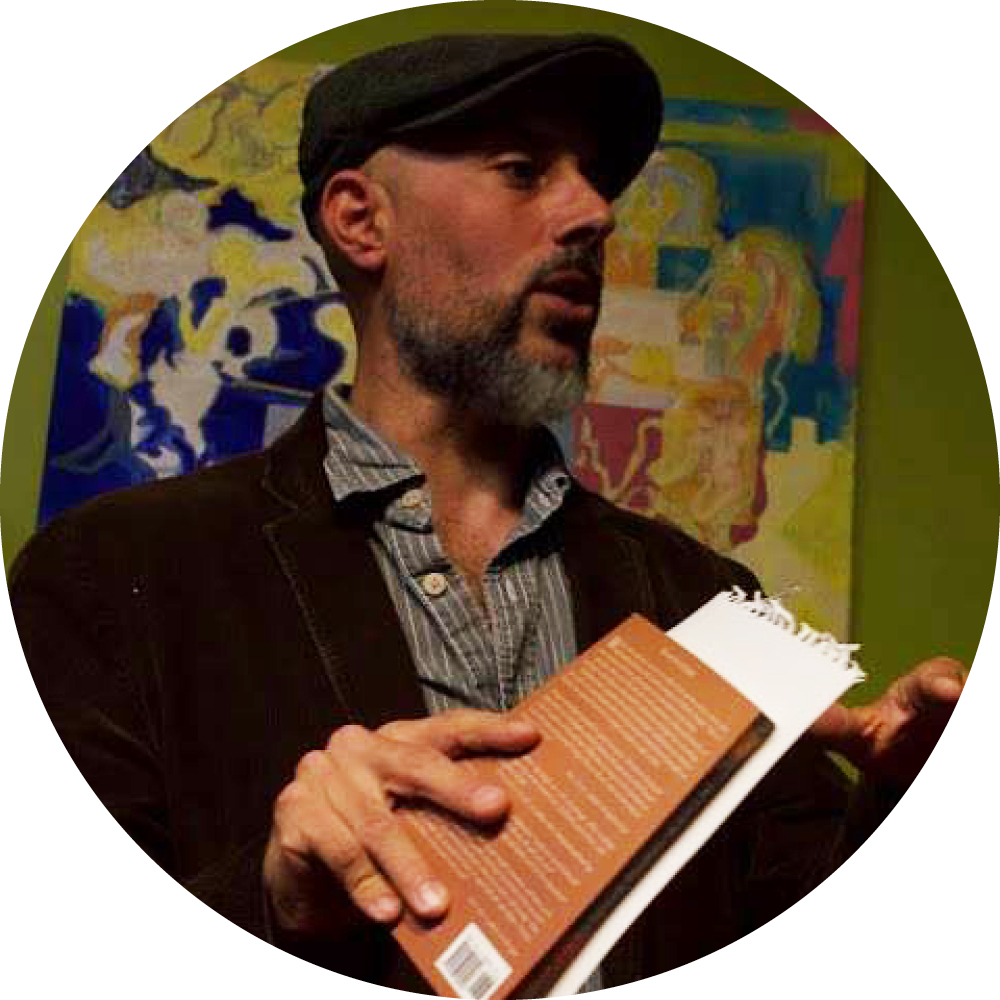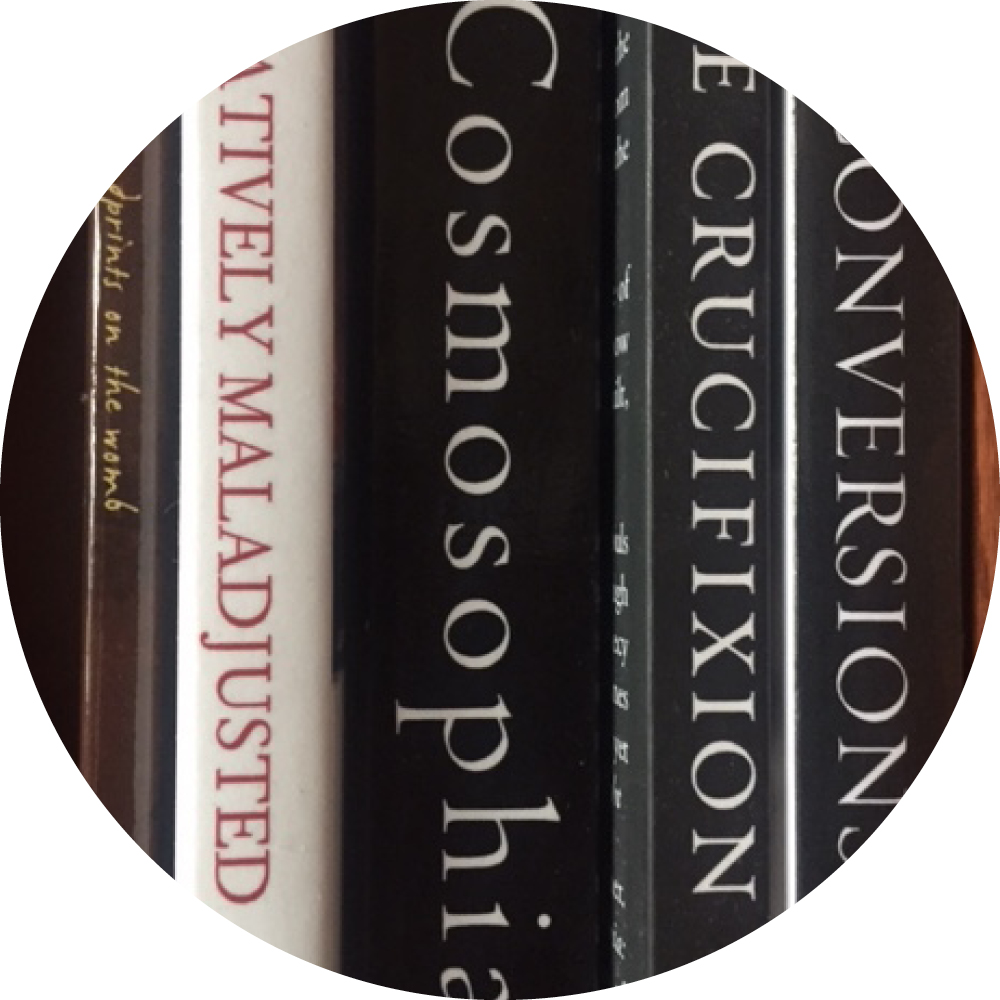Chicago and the
Politics of Fear
By Ben Austen
On a recent Wednesday morning, in a mostly empty and unheated former Masonic lodge on Chicago’s South Side, members of a community nonprofit called Life Builders United gathered to meet mayoral candidate Garry McCarthy. McCarthy is the former Chicago Police Department superintendent whom Mayor Rahm Emanuel fired in 2015, after damning video surfaced of a C.P.D. officer killing seventeen-year-old Laquan McDonald. Of the fourteen candidates on the ballot for the February 26 election, McCarthy was the first to visit Life Builders in its headquarters in Englewood, which has struggled with high poverty, high unemployment rates, and gang violence for decades. The half-dozen attendees, who were gathered around a table as McCarthy arrived, began calling out their concerns before he’d had a chance to take off his leather bomber jacket.
One woman wanted to talk about the opening of another liquor store nearby. “We have enough problems with gangs and drugs, we don’t need more alcohol,” she said. A man – fiftyish, former military – explained that there wasn’t an affordable grocery store selling fresh fruit for miles. Someone else complained about the high prices at local corner stores, and the health hazards of the hot chips and Takis that they sell – “They stick us up without a pistol,” as she put it. Geraldine Smith, who runs Life Builders United, served six years on death row for the murder of her lover’s wife before her sentence was commuted to life imprisonment; she was paroled in 2008, and started Life Builders to help incarcerated and formerly incarcerated women to transition to life outside. She sat across from McCarthy with a ring of keys as large as a cat resting in front of her. Calling the Laquan McDonald incident “an ugly scar” on the city, she said, “I’m speaking from the black community now. All the stuff under the present mayor, you were there. How do you show us now that you care about us here in Englewood?”
McCarthy leaned back in his chair, his arms relaxed by his sides, looking calm and self-certain. He is fifty-nine and burly, with a thinning crew cut and a gray chevron mustache. He told Smith that Emanuel, who announced last fall that he wouldn’t seek a third term, had scapegoated him for the McDonald coverup. “I had accountability without authority,” McCarthy said. The day after Officer Jason Van Dyke shot McDonald sixteen times, with many of the bullets fired into the teen’s back, McCarthy saw the video taken from a police car’s dashboard camera – video that wasn’t revealed to the public until more than a year after McDonald’s death. McCarthy said that he only had the power to relegate Van Dyke to desk duty; the Police Board, led by another mayoral candidate, a former federal prosecutor named Lori Lightfoot, was in charge of meting out Van Dyke’s punishment, and an agency independent of the police conducted the investigation into McDonald’s death. McCarthy now insisted that City Hall had purposefully kept the video from being released until after the 2015 election, to help ensure that Emanuel could win a second term. “That’s a crime. It’s called official misconduct,” he said. There were oohs of encouragement from around the table.
Smith wondered why the media hadn’t picked up on McCarthy’s version of events. “They love to hear bad news,” she said, incredulously.
“They’re probably complicit,” McCarthy told her.
When the video of McDonald’s killing surfaced, protestors took to the streets calling for both Emanuel’s and McCarthy’s ousters, and the two men’s names have remained linked when it comes to Laquan McDonald. At a November mayoral forum convened by the Chicago Teachers Union, the host, a high school history teacher, celebrated McCarthy’s exclusion from the debate, which was focused on the city’s diminishing African-American population. “Garry McCarthy as superintendent endorsed senseless killings,” the host announced. “Rahm Emanuel and Garry McCarthy are not allowed here.”
With more than a dozen candidates and no incumbent, Chicago’s mayoral election is the most wide-open in memory, and arguably the most confounding. To win, a candidate must receive a majority of the vote, and barring a miracle or stupendous fraud, there will be an April runoff between the top two finishers. In recent polls, Cook County Board President Toni Preckwinkle, an African-American former teacher who landed the Chicago Teachers Union endorsement, was leading the pack, but with only fourteen percent. She and other candidates have been tainted by their ties to a twelve-term alderman, Ed Burke, who was charged in January with attempted extortion; Illinois Comptroller Susana Mendoza, for one, held her wedding in Burke’s home, with Burke’s wife officiating. Willie Wilson, an African-American businessman who listed “end carjackings” at the top of his ten-point plan, passed out cash to potential voters. Another candidate, Paul Vallas, is unpopular with teacher groups and many community activists for his tenure as head of the Chicago public schools, when he dramatically increased the number of charter and selective-enrollment schools. Thirty-five-year-old public policy consultant Amara Enyia, the candidate most likely to inspire millennial and progressive voters, won the endorsement of hometown hero Chance the Rapper, but she underreported income on her taxes and was accused of not paying a staffer. Bill Daley had surged into second place, raising millions of dollars – more than any of his opponents – by tapping wealthy bankers and developers. Daley’s late father, Richard J. Daley, and his older brother, Richard M. Daley, logged forty-three years between them as Chicago mayor, and are as responsible as any two human beings can be for the current state of the city.
Chicago exists as a violent caricature in the popular imagination. It is President Trump’s domestic bogeyman, his go-to for stoking fears of urban “American carnage” where minorities “are living in hell.” Trump likes to say Afghanistan is safer than Chicago, and he has repeatedly threatened to “send in the Feds” to bring law and order to the city. The city has real problems with violence that each of the mayoral candidates had vowed to take on. Chicago’s 561 murders in 2018 – down from 795 in 2016 – were almost double the count of New York’s, a city with three times the population. Twice as many illegal guns are taken off Chicago’s streets annually than in New York and Los Angeles combined. Trust in the police has crumbled, especially in the wake of the McDonald revelations, and police have seemed either unable or unwilling to do their jobs. Currently, Chicago police fail even to identify a suspect in eighty-three percent of murders.
For most of the fall, McCarthy maintained a place among the front-runners, but his support has dwindled as relatively late entrants such as Daley and Preckwinkle ramped up their campaigns and as election day neared. Polls show that a quarter of likely voters are still undecided. Chicago’s population is roughly a third each black, white, and Hispanic, and people historically tend to vote along racial lines. With so many candidates splitting the vote in hard-to-predict ways, McCarthy still has an outside chance at a runoff if he can galvanize white voters in the traditionally cop-and-fireman neighborhoods at the northwestern and southern edges of the city.
Independent of his chances, however, McCarthy’s candidacy crystallizes the dilemma of violence in Chicago. Over several weeks of following McCarthy, I heard him regularly rail against “an environment of lawlessness” in the city. Criminals, he said, were being emboldened and police hamstrung. People were being shot on the expressways, slaughtered as they walked their dogs. He said he and his wife and young son were often awakened by gunfire outside their River North home. “WE NEED SAFETY NOW!” he wrote, in a not atypical tweet. He alone among the candidates, he maintained, had the law-and-order experience to save Chicago. During his time as superintendent, from 2011 to 2015, he managed to reduce crime – although by how much, and why, and at what long-term costs, is both unclear and of great consequence to Chicago and cities like it across the country.
“Nothing will change in this city until we make it safe,” he said at Life Builders United. “I’m going to trust that you think I know how to do that.”
McCarthy is from the Bronx and spent twenty-five years on the N.Y.P.D., rising to the rank of deputy commissioner. Later, as a police superintendent, first in Newark and then Chicago, McCarthy turned to academics to develop alternative crime strategies and to enact policing reforms. Phillip Atiba Goff, a professor at John Jay College who heads the Center for Policing Equity, said that he got a call from McCarthy shortly after he took the job in Chicago: “Everything you know that works – I need it now,” McCarthy told him. Goff was enlisted to develop a training curriculum to help C.P.D. officers address implicit biases that could creep into their work. Under McCarthy, the 12,000 cops on the force each took a “procedural justice” class – designed by Tracey Meares and Tom Tyler, the co–founding directors of the Justice Collaboratory at Yale Law School – which focused not on why but how police encounters were conducted. The theory was that officers could help restore trust and legitimacy in policing by explaining why they stopped someone, by speaking respectfully and transparently about the process, and by allowing people to tell their version of events. McCarthy also broke up the C.P.D. specialized taskforce units that used to roam the city and swoop in like commandos into areas where they had no connections. He insisted that officers have “beat integrity,” working every day in the same places, getting to know residents. He expanded on the work of Northwestern sociologist Andrew Papachristos and David Kennedy, the director of the National Network for Safe Communities at John Jay, that focused on “hot people”: those shown in algorithms to be the most likely to commit violent crimes. His officers took a pre-crime approach – visiting the potential offenders, telling them they were being watched, offering them incentives to go straight.
McCarthy also relied on the same data-driven CompStat techniques he learned and mastered under Commissioner Bill Bratton on the NYPD. CompStat involves the assiduous tracking of crime trends, with captains moving statistics in the right direction by flooding streets with officers, aggressively enforcing low-level quality-of-life infractions, and increasing the investigative street stops known as stop and frisk. In McCarthy’s first two years in Chicago, the incidences of officers filling out contact cards for street stops jumped by 50 percent, the total number exceeding by four times what New York experienced at its stop-and-frisk peak. “Everything will improve if we just get out of the cars and put our hands on people,” McCarthy instructed a deputy chief in Chicago at a weekly CompStat meeting in 2012. “Make sure your officers are doing this, making out contact cards, and make sure we are stopping the right people at the right times and the right places. This will prevent more crime.”
When I questioned McCarthy about these tactics, he told me he made about 1,000 gun arrests in his career. “Do you know how many people jumped into the back of my squad car? Exactly none,” he said. But a study by the Center for Constitutional Rights that surveyed millions of stops in New York found that a gun was discovered in only about one of every 500 of these police encounters. A New York Civil Liberties report in 2011 found stop-and-frisk to be racially biased and largely ineffective: 90 percent of the New Yorkers stopped by police were non-white, and about the same percentage of those who were stopped had committed no crime. A federal judge later ruled the street stops unconstitutional. Over a summer in Chicago during McCarthy’s tenure, the A.C.L.U. of Illinois tracked more than 250,000 stop and frisks that revealed no criminal activity.
McCarthy claimed that aggressive street stops could be combined with procedural justice, officers “greeting the pedestrian respectfully, explaining the reason for the stops,” as he wrote in a 2012 paper. But a friendly narration didn’t mean the stop wasn’t racially motivated, or that it didn’t cause collateral damage to crime reduction efforts. It also didn’t mean much if abusive officers went unpunished. “Procedural justice without accountability doesn’t come close to doing the trick,” says Craig Futterman, the University of Chicago law professor who sued for the release of the Laquan McDonald dashcam video. “For those who see cops shake people down, the ‘real police’ aren’t the ones who are nice to you. They’re the abusive ones protected by the department.”
Soon after McCarthy’s firing, the Justice Department launched an investigation into the C.P.D., recommending the city enter into a court-monitored consent decree to remedy longstanding abuses, inadequate training, and insufficient oversight. When it was clear the Trump administration opposed the reform effort – then-Attorney General Jeff Sessions said it was a local matter, not the purview of the federal government – Emanuel and then-Illinois Attorney General Lisa Madigan designed their own consent decree. A judge finally approved a plan at the end of January that would require, among many things, the C.P.D. to rely more on de-escalation tactics, track and analyze foot pursuits, publish use-of-force data and overhaul its accountability system. Among any of the top or even middle-of-the-pack candidates, McCarthy is the only one who says he won’t do the work to turn the consent decree guidelines into practice; he contends that no police experts were involved in drafting the document, and that it would be too costly to pay any of the nine applicants bidding to become the independent monitor overseeing the agreement’s implementation. “We need real community involvement in policing, not more politicization of the C.P.D.,” he wrote in response to an A.C.L.U. questionnaire.
Crime did go down in Chicago under McCarthy, who is basing his mayoral campaign on the improved numbers. During his tenure, homicides fell to their lowest levels since the 1960s, gun arrests increased, police-involved shootings dropped, and citizen complaints against officers were cut by half. McCarthy uses these numbers not just to show his bona fides for checking the city’s perceived mayhem; he’s also making his case for running city government with a performance-based, CompStat approach. “What gets measured, gets managed. What gets managed, gets done,” he said recently at a campaign event at the City Club of Chicago.
If you dig into these numbers, though, they’re not as clear-cut as McCarthy suggests. Homicides did drop to 1960s levels in two of the years in which McCarthy was Chicago superintendent, but they increased during his other two years in office. In 2014, Chicago magazine completed a twelve-month investigation that showed evidence of “creative number crunching,” with the department reclassifying homicides or keeping them off the books for the year – a result, the investigation claimed, of the pressure under McCarthy to show results. A draft report from the Invisible Institute (an investigative journalism organization in Chicago where I am a senior fellow) showed that while use of force complaints made against C.P.D. officers did drop substantially between 2007 and 2015, the number of times officers reported using force actually increased slightly over this period. The discrepancy suggests that people gave up on a flawed complaint process that rarely held officers accountable.
In 2015, days after firing McCarthy, Rahm Emanuel gave a teary speech at City Hall in which he admitted to a “code of silence” on the police force. I suggested to McCarthy that the speech was a brave moment in Emanuel’s troubled mayoralty. “It was a moment of trying to save his ass – that guy cares about one thing and one thing only,” McCarthy replied. This past December, Jason Van Dyke became the first Chicago cop in decades to be convicted of homicide for a killing while on duty. (He was also given a controversially light sentence of eighty-one months; the same week, for instance, a black man who was eighteen in 2013, when he shot into a crowd and killed a fifteen-year-old girl, was given eighty-four years.) But despite McCarthy’s insistence that he had accountability without authority in the Laquan McDonald case, there was much he could have done that he didn’t. He didn’t correct the false narrative put out by his police department the night of the shooting – the video showed clearly that Van Dyke was not defending himself from a lunging McDonald. McCarthy didn’t initiate an investigation into any of the officers on the scene who gave testimony contradicted by the video. (In January, a judge found three of the officers not guilty of obstruction of justice and of lying about the 2014 shooting.) His department repeatedly denied FOIA requests for the dashcam video to be made public.
“Think about what real leadership would have looked like if you had someone committed to accountability and transparency as the superintendent of the C.P.D.,” Futterman said. “McCarthy didn’t fight the machinery of denial. He embraced it.”
At a bustling tavern called O’Hara’s more than a hundred blocks south of the city center, McCarthy was greeted on a December evening as a hero by the mostly white clientele. “God bless you, Mr. Mayor!” someone shouted playfully. O’Hara’s is in East Side, an industrial neighborhood bordering Lake Michigan and cut off from the mostly black South Side around it by a river, lakes, and highways. East Side, as one local at the bar put it, is “cop, fireman, streets and san, water department.” It was also now about eighty percent Hispanic, although you wouldn’t know it from the O’Hara’s crowd. McCarthy campaign posters were taped to the mirror behind the bartender, beneath six television sets all tuned to the same Blackhawks game. A Chicago police officer named Jennifer Przybylo, the widow of a C.P.D. commander who died of cancer, introduced McCarthy, saying she’d worked for him and knew what he was about.
“He’s a neighborhood person, just like us,” she said, her accent unmistakably Chicago. “He’s an avid sports fan, just like us. And he won’t forget us.”
“He better not,” a man interrupted her to laughs.
“Cubs or Sox?” another guy called out.
“Garry is career law enforcement,” Przybylo went on. “He knows how to reduce crime.”
McCarthy, sipping on a bottle of Miller Light, talked to the patrons at O’Hara’s about a plan to raise revenue by opening casinos in the city airports. A few weeks later, he’d propose annexing several of the prosperous suburbs. (No thanks, went the response from a few of these municipalities.) But his talk at O’Hara’s quickly turned to crime. He choked up as he began to describe the murder last year of a police commander who worked under him. Paul Bauer was downtown, in the middle of a weekday, when he was shot by a four-time convicted felon.
“Unbelievable,” someone exclaimed.
“Damn right,” McCarthy said. He said Bauer’s murder convinced him that he needed to run for mayor, that he couldn’t stand on the sidelines as the city fell to pieces. “There are tragedies virtually every day,” he said. “There is not a place in the city you can say is safe.”
When I talked to people at O’Hara’s about their concerns in the upcoming election, most of them mentioned crime. “It’s up everywhere you go,” said a guy in a White Sox cap, who didn’t want to give his name because he doesn’t trust the media. He talked about a murder in the Loop, how crimes in ritzy parts of the city weren’t being disclosed. “I feel safer in this neighborhood,” he said. But the conversations about the city’s dangers felt abstract; when discussing other pressing issues, people went into much greater detail. They were worried about their children suffering brain damage from the toxic manganese left in the soil by the steel mills that once employed many in the neighborhood, but were now long gone. They had seen their property taxes rise. A young man with a car-detailing business worried about zoning. “We need good-paying jobs, not $12 an hour,” a woman named Leni told me. “We need the neighborhood to come back.” The man next to her tried to describe his sense of feeling abandoned by city government, saying, “People treat us like we’re in Indiana.” Their problems were complex, their anxieties difficult to express.
At campaign stops, McCarthy often talks about structures of inequality in Chicago, about disinvestment in black communities, and how the African-American population has plummeted by a quarter million over the past two decades. “We have to look backward to understand how we got here. We need to have frank conversations about race,” he said when he visited Life Builders United, in Englewood. “We need to talk about slavery, Black Codes, Jim Crow, segregation and racist laws like redlining.” I’d seen McCarthy deliver the same speech several times: with crowds that had jeered him suddenly offering up applause, and with mostly wealthy white audiences where the emphasis on racism’s legacy gained him less. At O’Hara’s, for instance, he talked about being a mayor that served not only East Side but also Englewood and the West Side. And in a high-end gated community on the Near North Side, I heard him lecture one of the homeowners about the importance of giving African Americans on the South Side more reasons to stay in the city. But he also engaged in fear-mongering. At the City Club of Chicago, he warned that the dangers of the city had leapt the divide from impoverished black and Latino neighborhoods on the South and West Sides: “If you’re a criminal in one of those neighborhoods, where are you going to go to commit your crimes? Are you going to rob people who have nothing to steal?”
What he didn’t talk about anywhere was the role the Chicago Police Department played in enforcing and widening the racial divide in the city: the first Mayor Daley ordering officers to “shoot to kill” during the rioting that followed the assassination of Martin Luther King, Jr.; the police raid fifty years ago this coming December that gunned down Black Panther leaders as they slept; a police commander named Jon Burge whose “midnight crew” of cops tortured more than a hundred African-American suspects from 1972 to 1991, coercing false confessions by beating, suffocating, and electrocuting them. “Widespread constitutional violations, combined with unaddressed abusive and racially discriminatory conduct, have undermined the legitimacy of C.P.D. and police-community trust in these communities,” stated a Justice Department investigation prompted by the Laquan McDonald shooting. An independent task force ordered by Mayor Emanuel shortly after McCarthy’s dismissal concluded that police in Chicago showed “no regard for the sanctity of life when it comes to people of color.”
In Englewood, Geraldine Smith responded to McCarthy’s insistence that the city talk about Jim Crow and redlining by recounting a night not long ago when a dozen boys who worked with her left the center to go home, crossed the street, and were stopped by the cops. She rushed outside to see them lined up against the wall of a corner deli, a police van arriving to haul them away. Smith, someone who knows the realities of imprisonment, asked a tall white officer she’d never seen before why he was harassing her boys – because of the color of their skin? Because they let their pants sag? These teenagers were doing good, she remembered explaining, and she described the perils they faced every day from both the police and the different corner gangs.
“Ma’am, I’m going to ask you to step back,” the tall cop told her. So she did. Luckily, Smith had the phone number of the district commander. She reached him, and he must have passed along a message to the officers on patrol, she said, because the tall cop and the others left suddenly, without any explanation about procedure, or an apology.
In many ways, the mayoral election in Chicago is a referendum on encounters just like the one Smith described. Lori Lightfoot, who is vying to become the first black woman to serve as mayor and who is the first openly lesbian mayoral candidate, said she would create a new position of Chief Diversity Officer within the C.P.D. to deal with the department’s history of bias. Preckwinkle wants to scrap a massive gang database of 128,000 names; 70 percent of those in the database are African American and 25 percent Latino, and anyone mistakenly added can’t appeal their gang designation. “This approach makes it more difficult to hone in on actual criminals and encourages entire communities to avoid any and all contact with police,” Preckwinkle wrote on her website. Gery Chico, a former chief of staff to the second Mayor Daley, threatened to sue neighboring states for selling guns to Chicagoans without requiring them to possess a permit or license or to undergo a background check. Bill Daley said he would add thousands of surveillance cameras and drones to the city. Most of the candidates called for hiring more detectives to help increase the paltry clearance rates for violent crimes, even if they didn’t say where the necessary funds would come from. Amara Enyia proposed redirecting some of the nearly 40 percent of the Chicago operating budget that goes to policing, spending it instead on schools, mental health facilities, housing, and job creation. Describing the dangers of what she called McCarthy’s “dog-whistle, tough-on-crime talk,” she said, “If you’re in leadership, your responsibility is not to keep feeding the easy and lazy narrative of more police on the block. That won’t make people feel safe.”
At Life Builders United, the people of Englewood had their own suggestions about what their community needed. “Are the police going to be taught compassion, empathy, something instead of shooting?” a woman asked McCarthy. Someone else added that block clubs should be mandatory, as a way to get residents to self-monitor, making policing less necessary. A former gang member said there needed to be systems in place to teach young people “to evolve” from being in a gang, and he said the lessons should to be led by people like himself with “critical thinking about what’s going on in the streets.” Geraldine Smith said she reduced crime herself by spending nights outside, getting boys to help her tend a garden until one and two in the morning.
“You know, sometimes it’s just like we have to be able to do it ourselves,” said a man in his twenties who walked in midway through the meeting. He added that it was going to be hard for people in the neighborhood to look at McCarthy and believe in his sincerity.
“The system is designed to not work for you,” McCarthy said, his voice rising with excitement. He would change that. “How I want to move the city forward starts in places like Englewood and North Lawndale. It doesn’t start on LaSalle Street,” he said. “I got it. Trust me.”
About The Author
Ben Austen
Ben Austen is the author of the book High-Risers: Cabrini-Green and the Fate of American Public Housing. He has written for the New York Times Magazine, GQ, Harper’s and many other publications.
Re-sources
Re-Imagining Education

Empowering educators to take a deeper look at the stories told in our schools and to re-imagine them in transformative and
nurturing learning spaces.
Learning Opportunities

Classes, workshops, and lectures that help to empower people to re-imagine who they are and their place in the world.
CWP

The Chicago Wisdom Project offers a alternative to the industrial and corporate models of education that have become increasingly prevalent in the American educational landscape.

